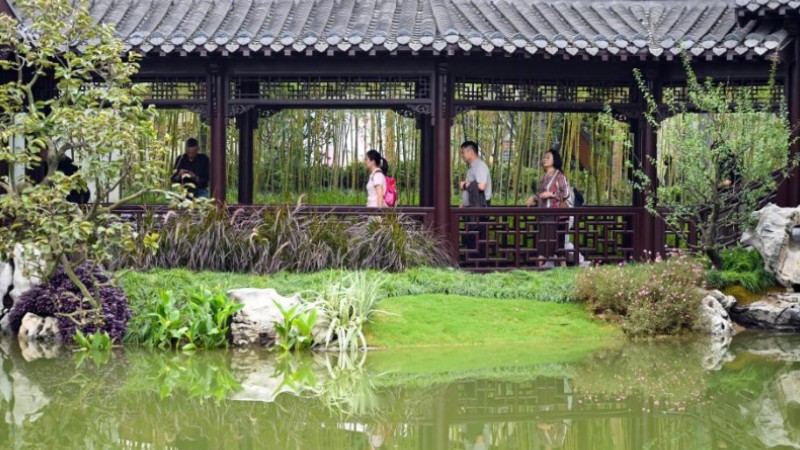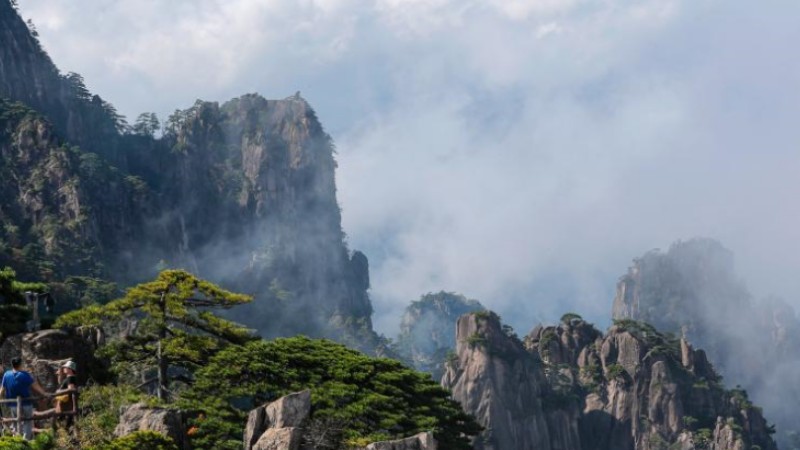Guardians of Ulan Suhai Lake: postgraduates committed to water environment protection

Postgraduate students pose for a group photo at an observation station of the Ulan Suhai Lake in Bayannur, north China's Inner Mongolia Autonomous Region, Sept. 14, 2023. (Xinhua/Xing Guangli)
BAYANNUR, Sept. 27 (Xinhua) -- Located at the apex of the meandering bends of the Yellow River, Ulan Suhai Lake, also known as Wuliangsu Lake, is the biggest lake wetland of the Yellow River basin.
There is a group of postgraduates from Inner Mongolia Agricultural University, who are members of a research team on protecting and repairing the water environment of river and lake wetland, living by the lake monitoring the water quality and ecology so as to provide important data for ecological management in Ulan Suhai Lake.
26-years-old Wu Rong, a member of the team, will get her doctoral degree next year. "We have 16 regular researchers and 28 transient members, " said Wu. Every half month, Wu and other team members will go to the lake, collecting water and mud samples in 25 locations and analyzing them. It costs one whole day to do the work as the total lake area covers 300 square kilometers. Their fingers usually peel due to times of dipping into the water. However, they are not afraid of those hardship.
"Monitoring and repairing the ecological environment of Ulan Suhai Lake is important and our work is meaningful as it can provide fundamental data for its treatment,"said Wu Rong.
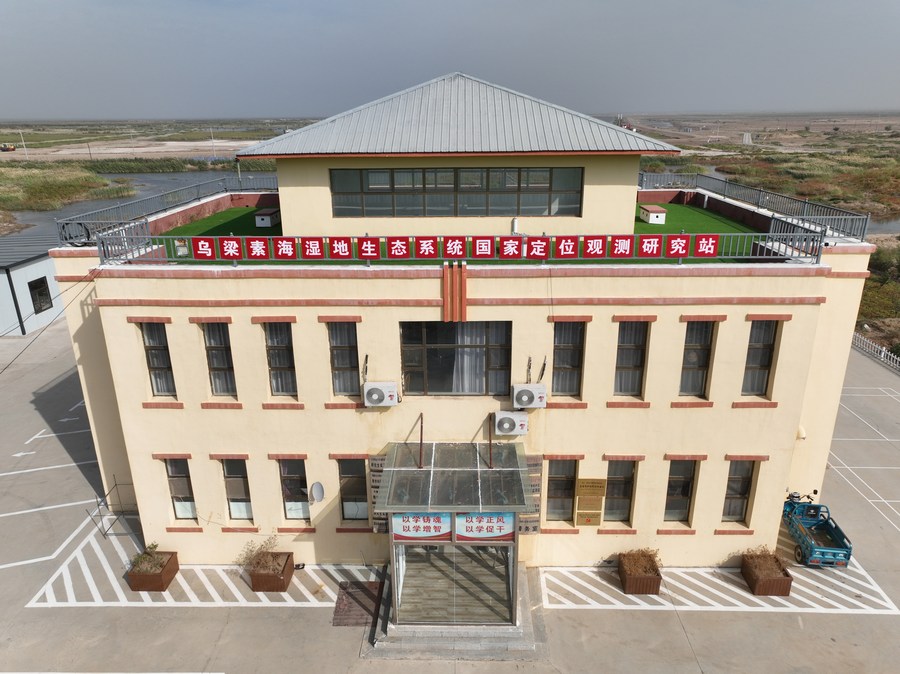
This aerial photo taken on Sept. 14, 2023 shows an observation station of the Ulan Suhai Lake in Bayannur, north China's Inner Mongolia Autonomous Region. (Xinhua/Xing Guangli)

Wu Rong (R) and team members Feng Chen (L) and Liu Yinghui take a yacht to collect water samples from the Ulan Suhai Lake in Bayannur, north China's Inner Mongolia Autonomous Region, Sept. 15, 2023. (Xinhua/Lian Zhen)
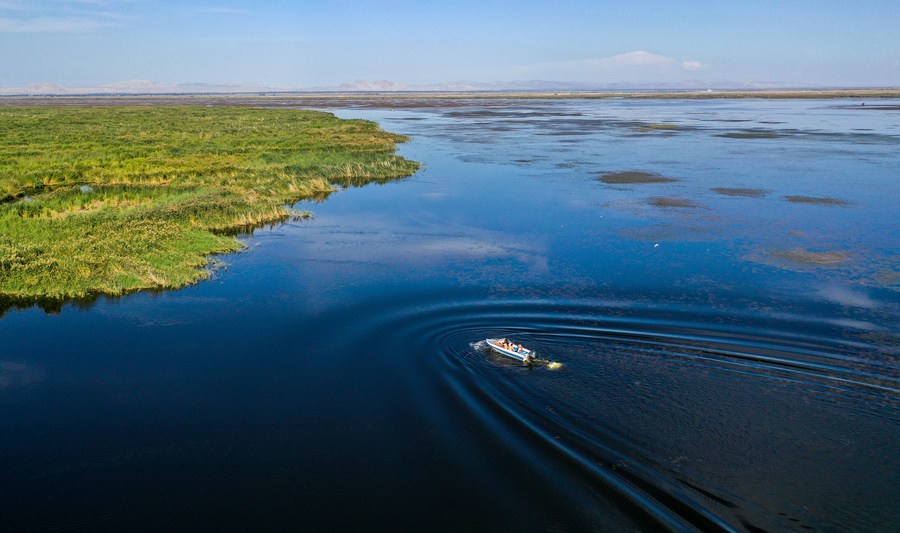
This aerial photo taken on Sept. 15, 2023 shows Wu Rong and team members Feng Chen and Liu Yinghui taking a yacht to collect water samples from the Ulan Suhai Lake in Bayannur, north China's Inner Mongolia Autonomous Region. (Xinhua/Lian Zhen)
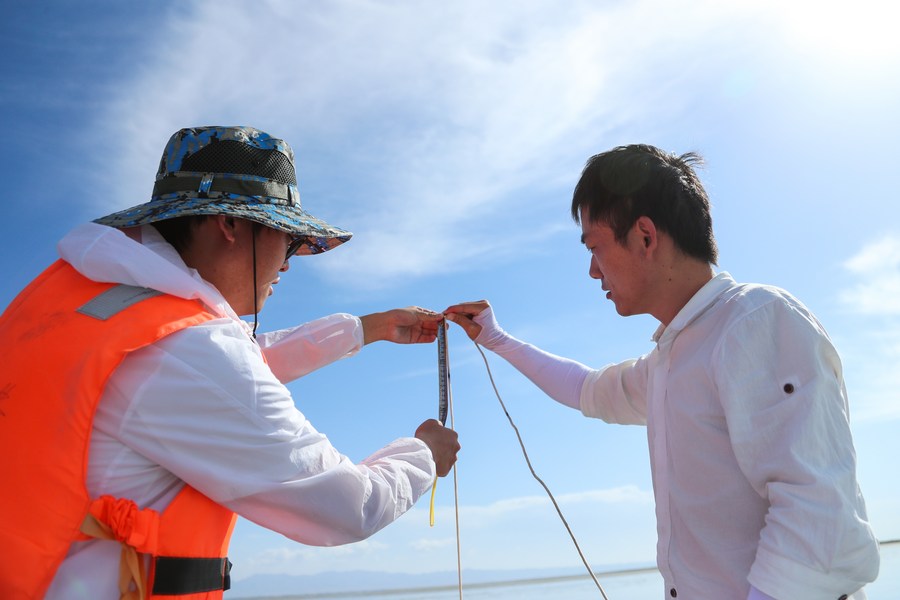
Team member Feng Chen (L) and Liu Yinghui check water quality of the Ulan Suhai Lake in Bayannur, north China's Inner Mongolia Autonomous Region, Sept. 15, 2023. (Xinhua/Wang Kaiyan)

Team member Feng Chen collects mud samples from the bottom of the Ulan Suhai Lake in Bayannur, north China's Inner Mongolia Autonomous Region, Sept. 15, 2023. (Xinhua/Wang Kaiyan)
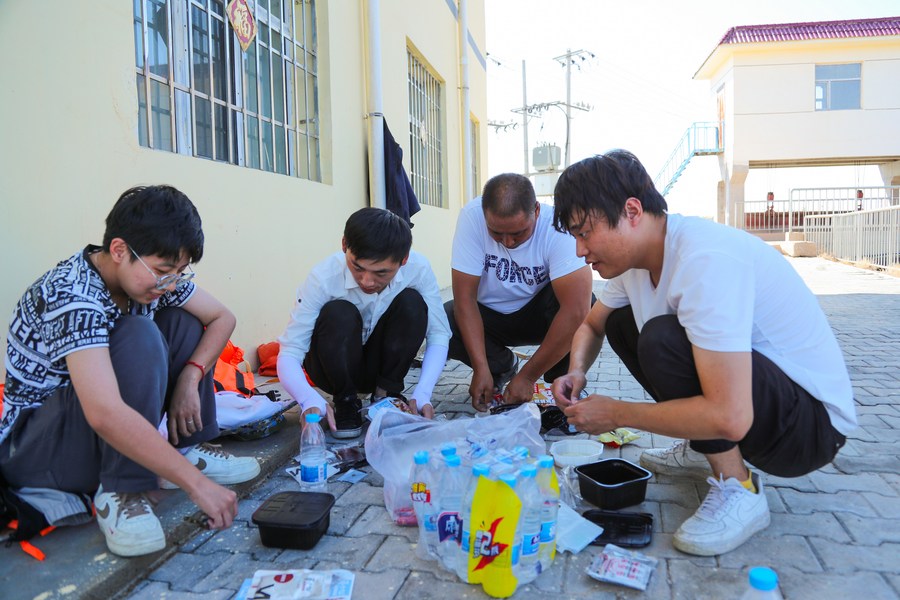
Team members have lunch after collecting water samples from the Ulan Suhai Lake in Bayannur, north China's Inner Mongolia Autonomous Region, Sept. 15, 2023.(Xinhua/Wang Kaiyan)

This photo taken on Sept. 15, 2023 shows a scenery of the Ulan Suhai Lake in Bayannur, north China's Inner Mongolia Autonomous Region. (Xinhua/Wang Kaiyan)

This aerial photo taken on Sept. 13, 2023 shows a scenery of sunset at the Ulan Suhai Lake in Bayannur, north China's Inner Mongolia Autonomous Region. (Xinhua/Xing Guangli)
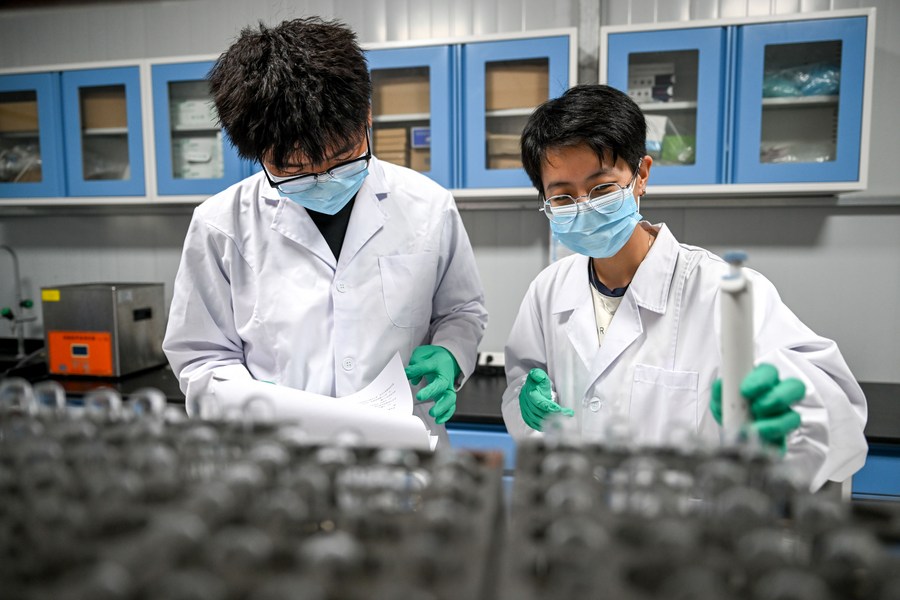
Wu Rong (R) and her fellow student process water samples collected from the Ulan Suhai Lake in Bayannur, north China's Inner Mongolia Autonomous Region, Sept. 14, 2023. (Xinhua/Lian Zhen)
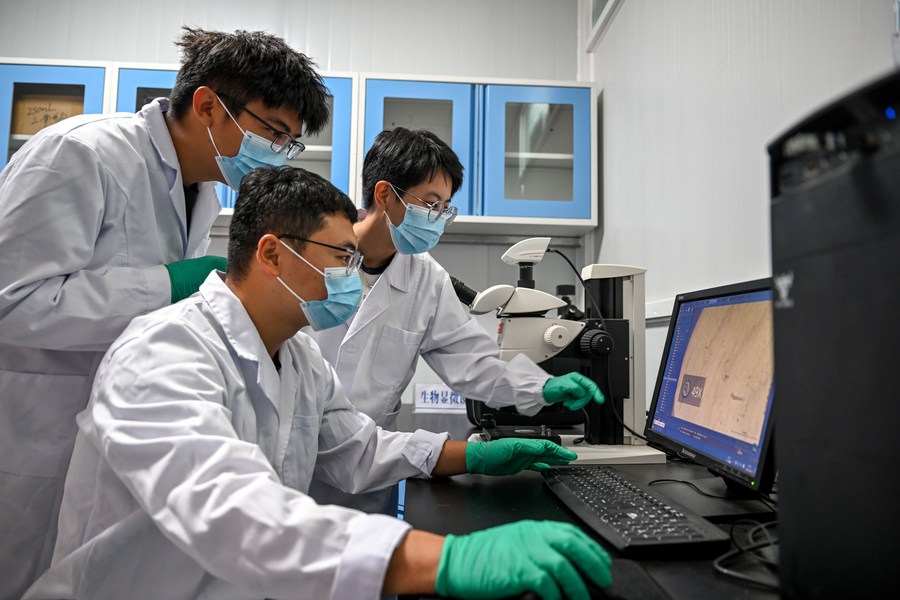
Wu Rong (1st R) and her fellow students study water samples taken from the Ulan Suhai Lake at a laboratory in Bayannur, north China's Inner Mongolia Autonomous Region, Sept. 14, 2023. (Xinhua/Lian Zhen)

Wu Rong and her fellow students study water samples taken from the Ulan Suhai Lake at a laboratory in Bayannur, north China's Inner Mongolia Autonomous Region, Sept. 14, 2023. (Xinhua/Wang Kaiyan)
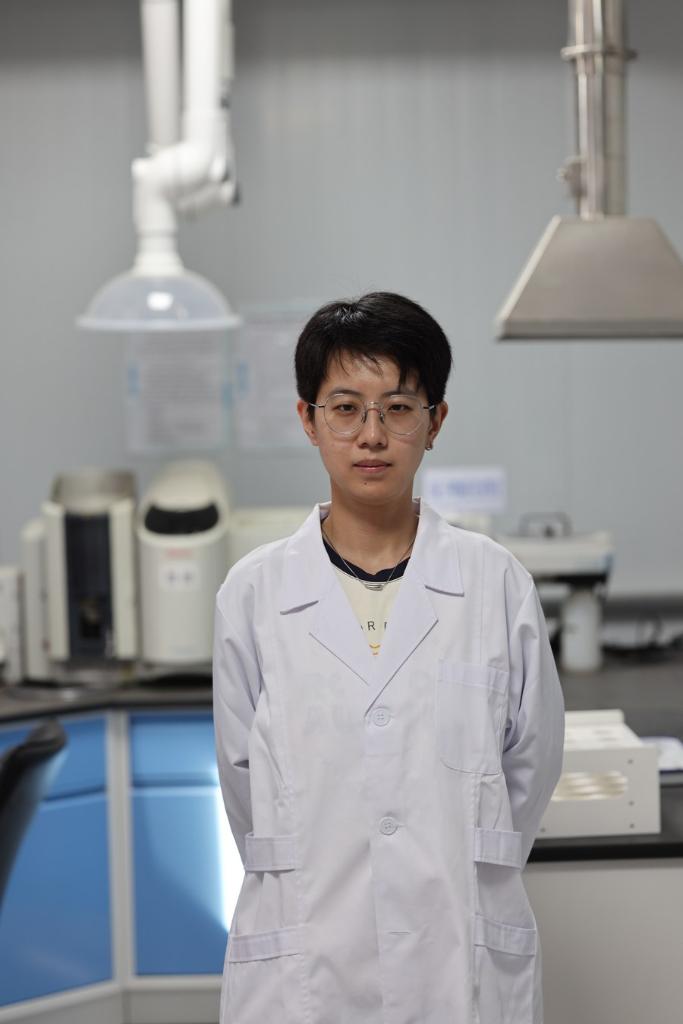
Wu Rong poses for a photo at a laboratory in Bayannur, north China's Inner Mongolia Autonomous Region, Sept. 14, 2023. (Xinhua/Xing Guangli)
Photos
Related Stories
Copyright © 2023 People's Daily Online. All Rights Reserved.







